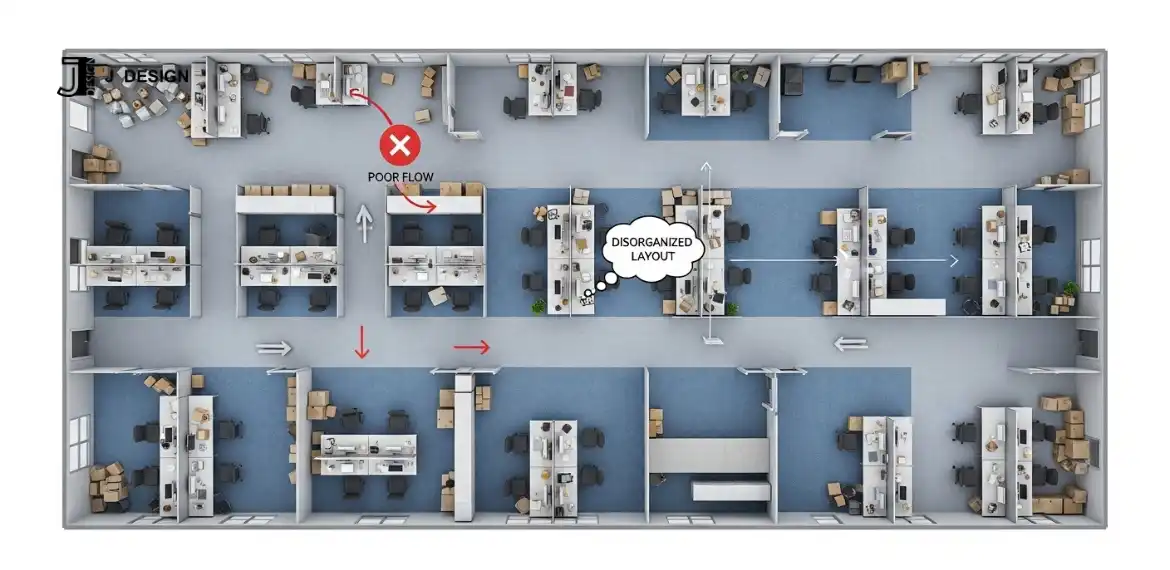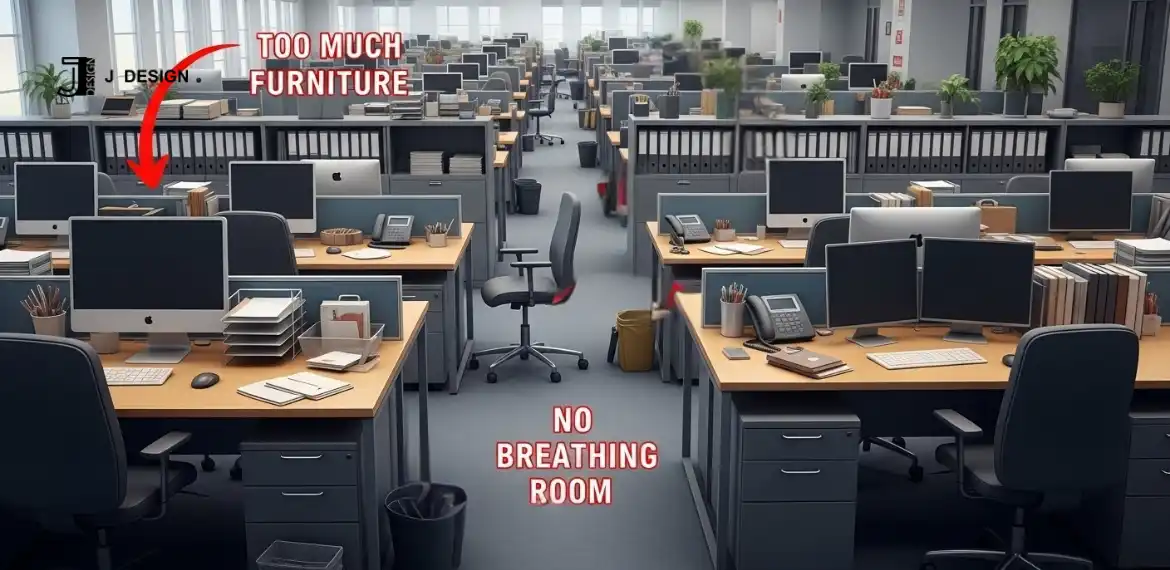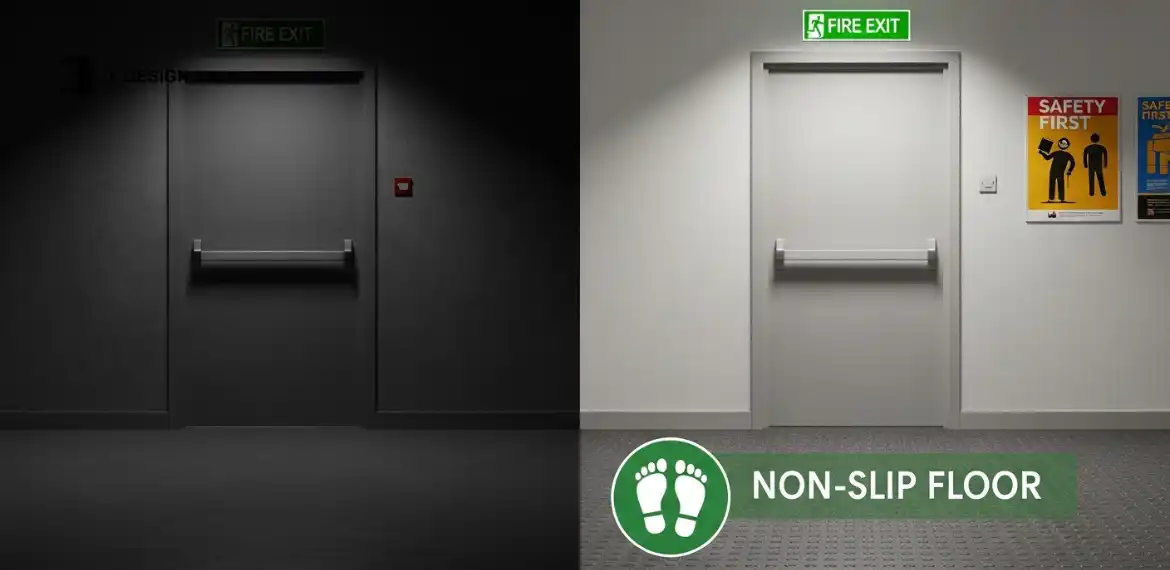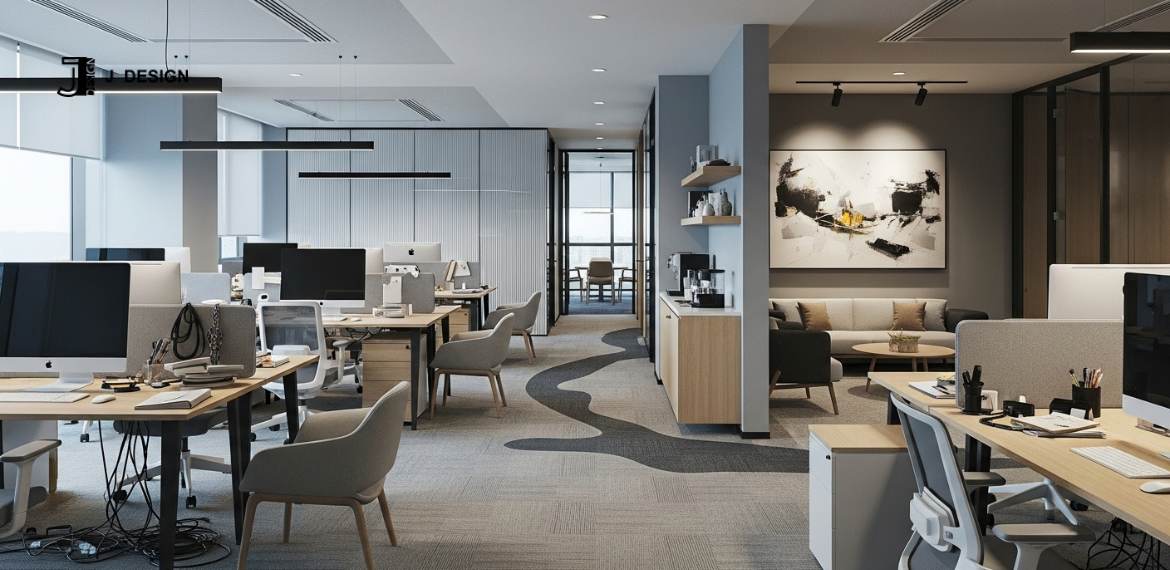Designing a commercial space is more than choosing colours and furniture, it’s about shaping how people feel the moment they step inside. A well-designed office or shop can inspire, connect, and even boost performance. But when style overshadows purpose, things quickly fall apart. From awkward layouts to harsh lighting, small mistakes can quietly undermine even the most stunning design. Let’s uncover the most common commercial interior design mistakes and how to spot them before they cost you time, comfort, or credibility.
Layout & Functionality Mistakes
Overcrowding the Space
A common mistake many businesses make is trying to fit too much into one space. Overloading interiors with bulky furniture, heavy décor, or unnecessary partitions can make even a spacious room feel cramped and chaotic. Instead of feeling inviting, the environment becomes overwhelming and disorganised.
Every commercial space needs breathing room. Open areas allow people to move freely, think clearly, and interact comfortably. When a space feels cluttered, energy drops, and productivity suffers. In design, less really can do more.
Poor Space Planning
One of the most common and costly mistakes in commercial interiors is poor space planning. When desks are squeezed too close, walkways feel cramped, or meeting rooms sit awkwardly out of reach, the whole space loses its rhythm. In offices, this disrupts focus and productivity; in retail environments, it can make customers feel uneasy or rushed.

Every great commercial design starts with flow. The way people move through a space should feel effortless and intuitive. Without thoughtful planning, even a beautifully styled office can quickly become a daily source of stress.
If you want to create a layout that’s both functional and welcoming, J Design, a commercial interior design company, offers professional space planning services in Singapore.
Forgetting Functionality
A beautiful space means little if it doesn’t work well. One of the biggest commercial design mistakes is focusing too much on how a space looks and not enough on how it’s used every day. When storage is overlooked, workflows are disrupted, or accessibility is ignored, even the most stylish design quickly becomes impractical.
Functionality is what keeps a space running smoothly. Without it, maintenance becomes more difficult, productivity declines, and renovation costs rise faster than expected. Great design should always serve both purpose and people.
Overlooking Flexibility

Businesses evolve, and their spaces should too. One of the most common mistakes is designing interiors that can’t adapt. Fixed layouts, built-in furniture, or overly customised zones make it hard to adjust when the business expands or changes direction.
A flexible design allows a space to grow, shift, and evolve effortlessly. It’s not just thoughtful planning, it’s an investment in the future.
Furniture & Fixtures Mistakes
Choosing the Wrong Furniture
Furniture does far more than fill a room; it shapes how people work, move, and feel. Yet one of the most frequent commercial interior design mistakes is choosing pieces that don’t suit the space or its purpose. Oversized desks, stiff chairs, or mismatched styles can make an office feel awkward, cluttered, or even uncomfortable.
The best furniture strikes the right balance between style, function, and comfort. When that balance is lost, even the most visually stunning space can fall short in how it’s actually used day to day.
Bad Lighting Choices
Lighting can completely change how a space feels, yet it’s one of the most overlooked elements in commercial design. Too dim, and the atmosphere feels tired; too harsh, and it becomes uncomfortable. Ignoring natural light or choosing the wrong fixtures can flatten even the most beautifully designed interiors.

Many commercial spaces rely only on overhead lighting, forgetting how important balance and layering are. Without the right mix of ambient, task, and accent lighting, a space can lose its warmth, energy, and purpose, and no amount of décor can fix that.
Neglecting Acoustics
Noise is one of the most overlooked elements in commercial design, yet it has a huge impact on comfort and focus. In open offices, restaurants, and cafés, sound can bounce off hard surfaces, creating echoes and constant background chatter. Without proper acoustic planning, even the most stylish space can feel noisy and stressful.
Good acoustics make a space feel calm and comfortable. When sound is managed well, conversations become clearer, concentration improves, and the entire environment feels more inviting.
Branding & Aesthetic Mistakes
Ignoring Brand Identity
A space that doesn’t reflect the brand behind it feels hollow, no matter how well-designed it looks. Ignoring brand identity is a subtle but powerful mistake that can confuse both clients and employees. Imagine walking into a cheerful café that feels like a stiff corporate boardroom, or a tech startup decorated like a boutique hotel; it just doesn’t fit.
Your commercial interior should speak the same language as your brand. Every colour, texture, and design choice should tell your story and remind people who you are the moment they walk through the door.
Following Every Trend
Trends can spark great ideas, but building your entire design around them is a trap. What’s stylish today might feel outdated tomorrow. When businesses chase every new look, they often lose sight of what truly represents their brand.
A timeless design doesn’t mean dull; it means thoughtful, balanced, and built to last. The goal is to create a space that still feels fresh and relevant years down the line.
Safety & Professional Guidance Mistakes
Overlooking Compliance and Safety
A beautiful design means little if it isn’t safe. Every commercial space must comply with safety codes and accessibility standards, including proper fire exits, non-slip flooring, and appropriate materials. Rushing the process or cutting corners to save time can lead to costly setbacks and serious risks.

Design should always put people first, and that starts with keeping them safe and comfortable in every corner of the space.
Skipping Professional Help
Trying to handle a commercial design project alone might seem like a way to save money, but it often leads to bigger costs down the road. Without expert guidance, minor oversights can turn into expensive mistakes that affect both function and aesthetics.
Partnering with an interior design company brings experience, structure, and creative problem-solving to the table. Professionals know how to balance style, safety, and practicality, turning your vision into a space that truly works.
For residential projects, check out our guide on Interior Design Mistakes in Singapore Homes.
Conclusion
Every mistake in commercial interior design carries a cost, whether in comfort, efficiency, or reputation. Poor planning, bad lighting, overcrowding, and ignoring functionality can turn even the most stylish space into a source of frustration. On the other hand, thoughtful layouts, balanced lighting, functional furniture, and designs that reflect your brand create environments where people feel comfortable, productive, and inspired.
If you want a commercial space that really works for your business, J Design, the commercial interior design company in Singapore, can help bring your vision to life with a space that’s functional, stylish, and reflects your brand, creating an environment that works beautifully for years to come.
FAQs
1. Why is commercial interior design important?
Commercial interior design shapes how people experience a business. It affects first impressions, employee satisfaction, and even sales. A well-designed space improves comfort, flow, and productivity while reflecting the company’s values and professionalism.
2. What are the types of commercial interior design?
Common types include office design, retail design, hospitality design, healthcare interiors, and educational spaces. Each type has different goals, such as improving office efficiency or creating memorable experiences in shops and hotels.
3. What’s the most important thing to remember when designing a commercial space?
Functionality comes first. A commercial space should support how people work, move, and interact. Great design blends beauty, comfort, and practicality while staying true to the brand identity.
4. What is the 60/40 rule in interior design?
The 60/40 rule helps balance a design. Around 60% of the space should follow a dominant design style or colour, while 40% adds contrast and character. This creates harmony without making the interior feel flat or monotonous.
